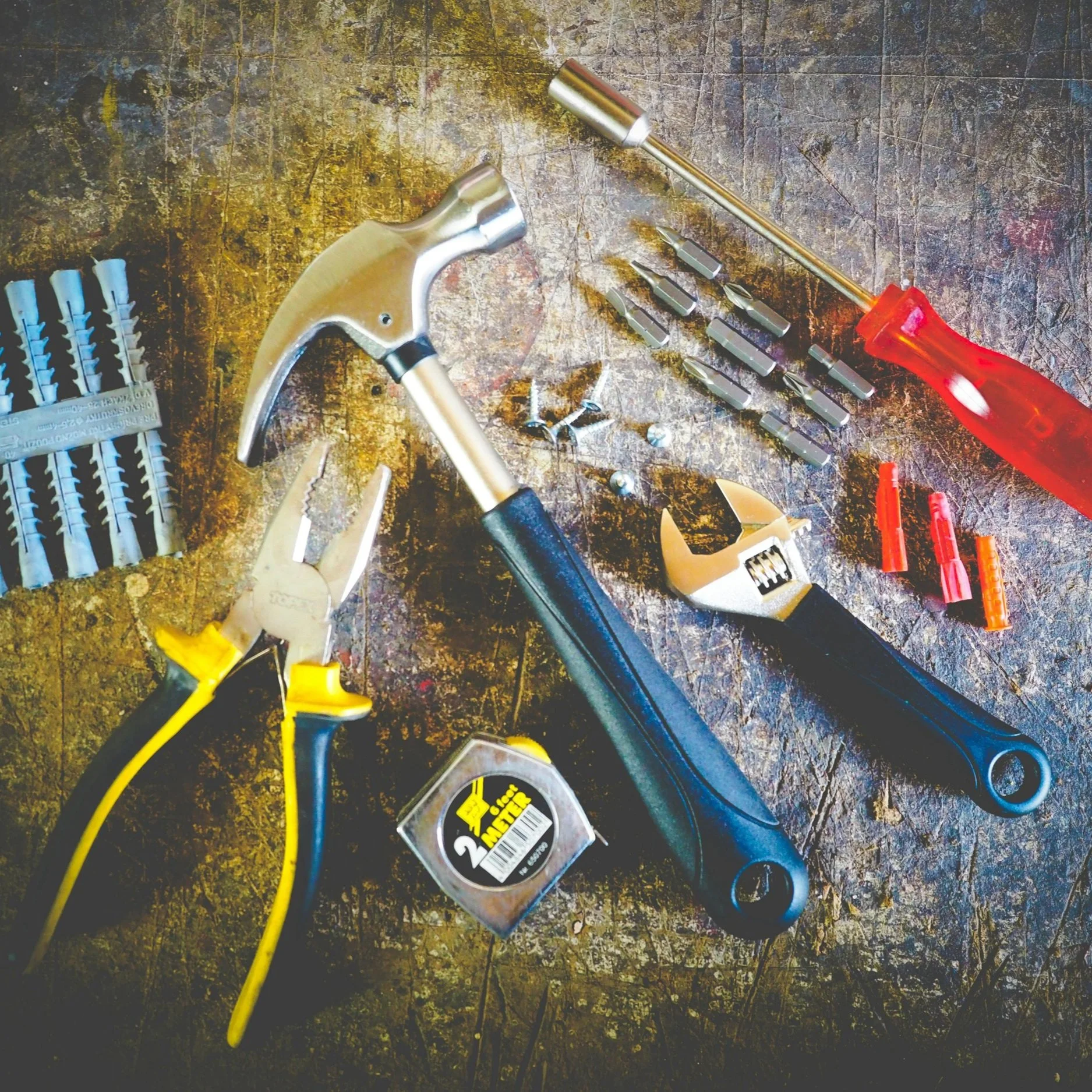The Art of Repair in Relationships
Built in the early 1800s, the two humble houses had "good bones.” But they were old! They had been in our family for nearly seventy years, and many holiday gatherings, celebrations and mournings took place within the thick adobe walls. When the remaining beneficiaries decided to sell the family property, everyone was worried the houses would be torn down. The land was more valuable than the rustic structures, and it would have been cheaper and more efficient to scrape the houses and build anew.
In general, starting over has become easier and requires fewer resources. It’s cheaper and faster to buy new clothes, furniture, appliances, or computers than to fix or restore the old stuff. If we want to be resourceful, we break it down and sell it for parts or recycle it, but even that requires more time and effort than we are often willing to spend.
This disposable mentality has also crept into the way we think about relationships. If it’s broken, worn down or flawed, it’s easier to just start over. Without a doubt, there are certainly situations in which it is necessary to eliminate abusive or destructive relationships. (I’m an avid proponent of boundary setting and dismantling toxic dynamics.)
No relationship is perfect
Learning how and when to invest in repairing relationships can ultimately lead to greater health and happiness.
As human beings, we are inherently errant and imperfect. We are constantly changing through age and life experience. We may try to do everything “right,” but if we are in a relationship with another human, ruptures are inevitable. Some people think if they don’t argue, their relationship is healthy.
Every relationship encounters conflict. We see things from different points of view, we disagree, we drift apart, our priorities shift, we make mistakes. That is a normal relationship. The greatest marker of a healthy relationship is one that is able to repair effectively.
Self-Regulation ~ Repairing Within
Before repairing with anyone else, we must first repair within ourself.
In home renovation, it’s absolutely imperative to ensure a stable foundation. If we knock down a weight bearing wall, everything is likely to crumble around us. Similarly, we can’t begin to repair our relationships if our personal internal structure is not sound.
Be aware of your body—We create a stable inner foundation through self-regulation which begins with self-awareness. Imagine an argument with a partner or family member. Notice what happens inside your body when you are engaged in conflict. Perhaps your throat tightens as your voice becomes louder, your muscles clench in frustration, or your heart rate quickens as you attempt to explain or defend yourself. These are the body’s signals that our sympathetic nervous system (fight or flight response) is activated. If we are too revved up, we will not be able to repair effectively.
Take an intermission—Don’t hesitate to step away from an escalated conflict. Give yourself permission to pause or slow down. Communicate your need to take a break and your intention to return to the discussion once you’ve calmed down. Whether you provide a specific or more general timeframe, committing to return to the conversation is integral to relational repair. Don’t expect significant conflicts to just blow over. They typically flare up again sooner or later; meanwhile, resentment can accrue.
Restore safety—Take your time to reconnect with your parasympathetic (rest and restore) state. When we experience this felt sense of safety, we are able to access empathy and creative solutions. Experiment to find what works for you:
What helps you to restore your inner stability and balance? (ex. Feel your feet on the floor.)
Where might you create more space or softening in your body? (ex. Take a deep breath with a long, slow exhale.)
What memories, associations, or images invoke a sense of peace and comfort? (ex. Place your hand on your heart and imagine being in the presence of someone who makes you feel safe.)
Validate your unique experience—Inquire what it’s like to be you. Once we’ve reestablished a sense of safety in our body, we can access more emotional and cognitive flexibility. Acknowledge and honor your feelings with self-compassion. Validating your experience doesn’t necessarily mean that your thoughts or feelings are vindicated. Rather, it fosters a transformative awareness of them. They are not good or bad, right or wrong. They simply are. When we cultivate understanding and acceptance of our experience, we become more receptive and ready to repair.
Cultivating Resilience with Relational Repair
Our capacity to repair —to mend, restore, or reconcile— is the cornerstone of a secure relationship.
In Japan, kintsugi is the process of creating art by the mending of broken objects. Fragile items like ceramics or glass are restored by adhering broken pieces with a combination of lacquer and precious metal. Literally translated, kintsugi objects mean they are “joined with gold.” Known for their unique beauty, these works of art are most valued for their resilience and ability to become whole again.
In order to repair, we must re-join. We must come together again with the person with whom we have broken (or been in conflict). When this is modeled for us early in life, it sets a tone of trust and safety. It communicates that it’s okay to be vulnerable, to mess up, and to admit when we’re wrong. Even if we didn’t experience adequate repair in childhood, we can still cultivate security and restore trust in our adult relationships.
As with home renovation, repair is often more expensive in the sense that it requires significantly more time and resources. However, an investment on the front end results in sustainable and valuable results on the back end. Developed and honed through consistent practice, repair is a relational muscle that we grow and strengthen. As we improve, it becomes a natural aspect of our relationship dynamics.
6 Principles of R.E.P.A.I.R:
R.—Receptivity—Cultivate an attitude that is conducive to repair.
Show up with sincerity, patience, and openness. Suspend assumptions and judgements. Replace criticism with genuine (not condescending) curiosity. Tap into the courage to be vulnerable and honest. Seek to understand rather than focusing solely on being understood.
E.—Engagement—Invite respectful connection.
Pay attention to what feels safe and manageable. Do not meet under pressure or duress or when emotions are escalated. Return to self-regulation practices if/when necessary. When you are both ready to reconnect, establish a mutually agreed upon time, place, and topic for discussion.
P.—Posture/Positioning—What posture conveys a peaceful empowerment for you?
Be aware of nonverbal cues like eye contact and body language. Foster accessibility through an open and steady stance. Experiment with what helps to decrease agitation or defensiveness. Perhaps taking a walk side-by-side lends to a more constructive conversation. Or if you prefer face-to-face, find the proximity that promotes a safe connection. Uncross your arms; soften your gaze; relax your shoulders.
A.—Active/reflective listening—Create a respectful and reciprocal communication structure.
Listen attentively without interrupting or interpreting. Restate or summarize in detail what you heard. Ask clarifying questions. Confirm if you understood correctly or missed anything. Take turns allowing each person the opportunity to feel heard. (Communication techniques like Imago dialogue can also be helpful.)
I.—Imagination—Image what it might be like to be in the other person’s shoes (aka empathize).
This might not be easy at first, as our instinctive tendencies to defend or explain ourselves can rear up. Over time, we become more skilled at reframing conflict and considering the ambiguity in opposing perspectives. As we develop more empathy we are better able to validate others’ feelings as well as our own.
R.—Response-ability—Recognize the power in your ability to respond.
Refrain from playing defense. Instead, explore the variety of ways in which you might respond constructively. Options include, but are not limited to:
take a break and revisit the conversation at a later agreed upon time
validate the other person’s experience (“I can see how that felt __ ….”)
write a respectful and well-thought letter to share your feelings
ask what you can do differently in the future
acknowledge the impact of your words and actions
offer a sincere apology (and/or ask for one)
make a specific request or express your need with kindness
invite a hug or reaffirming gesture of connection
Learning to make relationships whole again is an art.
The “gold” that mends conflict is a combination of respect, curiosity, and humility. Investing in and maintaining the quality of our relationships infuses them with resilience and authenticity. When we learn to repair rather than discard, we often end up with something that not only stands the test of time, but actually increases in value.
As for the relic structures…
The new owners brought a fresh vision, and restored the homes to honor and revive the original history and architecture. The legacy lives on…






